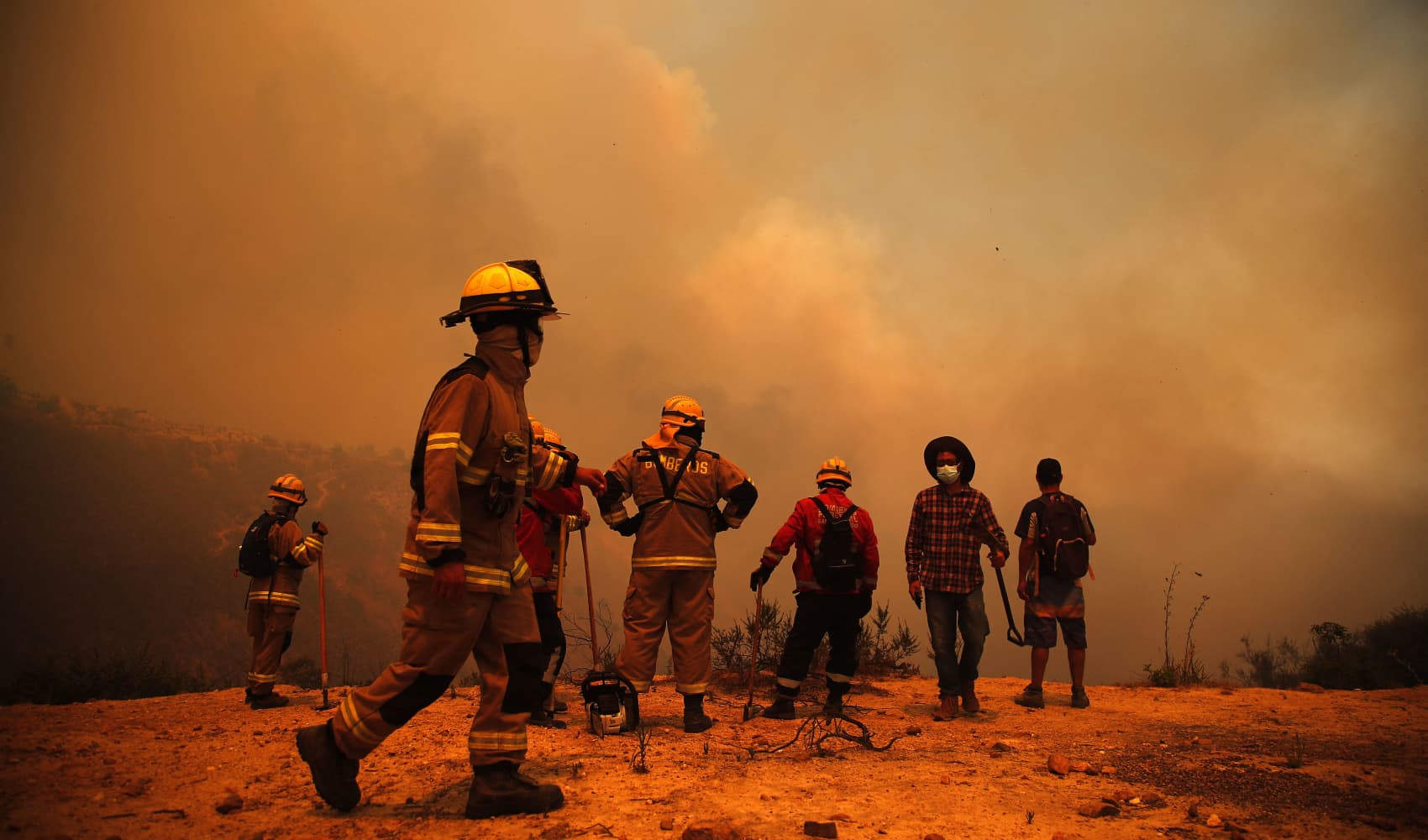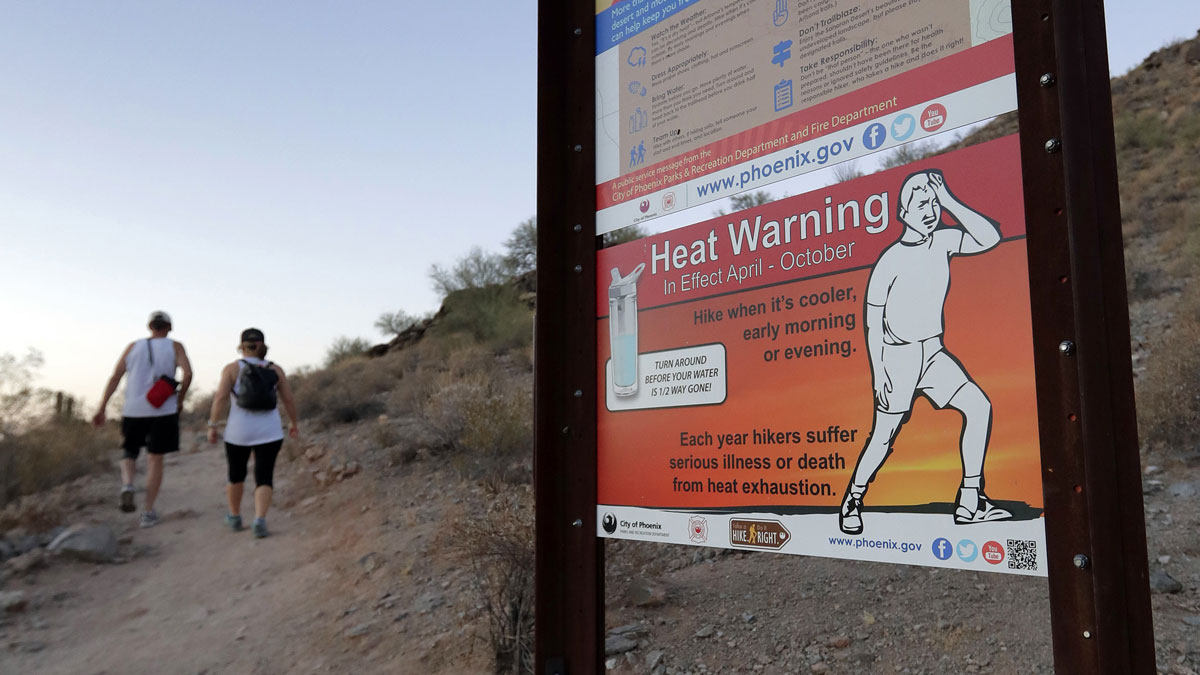
Millions of Americans sweated through yet another scorching day as temperatures soared Sunday across the U.S., while residents were rescued from floodwaters that forced evacuations across the Midwest, including in a town in Iowa whose own water-level gauge was submerged. One person was killed during flooding in South Dakota, the governor said.
From the mid-Atlantic to Maine, across the Great Lakes region, and throughout the West to California, public officials cautioned residents about the dangers of excessive heat and humidity. In Oklahoma, the heat index — what the temperature feels like to the human body — was expected to reach 107 degrees (41 degrees Celsius) on Sunday.
In the Midwest where South Dakota, Iowa and Minnesota meet, floodwaters rose through the weekend. In northwest Iowa, 13 rivers flooded the area, said Eric Tigges of Clay County emergency management. Entire neighborhoods — and at least one entire town — were evacuated, and the town of Spencer imposed a curfew Sunday for the second night in a row after flooding that surpassed the record set in 1953.
“When the flood gauge is underwater, it’s really high,” Tigges said in a news conference organized by Spencer officials.
Get top local stories in Southern California delivered to you every morning. >Sign up for NBC LA's News Headlines newsletter.
Gov. Kim Reynolds declared a disaster for 21 counties in northern Iowa, including Sioux County. In drone video posted by the local sheriff, no streets were visible, just roofs and treetops poking above the water.
Reynolds told reporters Sunday that more than 1,000 displaced residents slept in shelters Saturday night. National Guard troops were helping with water rescues and transporting needed medications lost in flooding.
“Businesses are shuttered. Main streets have been impacted,” Reynolds said. “Hospitals, nursing homes and other care facilities were evacuated. Cities are without power, and some are without drinkable water.”
National Weather Service meteorologist Donna Dubberke said parts of northern Nebraska, southeastern South Dakota, southern Minnesota and northwest Iowa received eight times the typical average rainfall. And more heavy rain was expected this week.
In South Dakota, Gov. Kristi Noem declared an emergency after severe flooding in the southeastern part of the state bordering Nebraska. Several highways were closed. Sioux Falls, the state’s largest city, had more than 7 inches (17.7 centimeters) of rain in three days. At least one person died in the floods, Noem said Sunday, without providing details.
Several rivers, including the Big Sioux, James and Vermillion, were expected to peak sometime Monday through Wednesday night, the governor said at a news conference.
“I want to remind everybody to remember the power of water and the flow of water, and to stay away from flooded areas,” Noem said. She added that “we’ve got a few days in front of us here that’ll be a little rough, but we’ll get through it together and do the very best to protect infrastructure, homes and families as we possibly can.”
Emergency management officials in the small South Dakota community of Dakota Dunes on Sunday issued a voluntary evacuation order for the area’s roughly 4,000 residents. Dakota Dunes is near the Nebraska and Iowa borders and is sandwiched between the Missouri and Big Sioux rivers, both of which are expected to crest in the coming days. Emergency management in Dakota Dunes warned residents that a mandatory evacuation could come quickly if flood barriers are breached.
But elsewhere, the heat was the biggest worry.
“It’s more important for people who are going to be outside to stay hydrated, because heat, humidity and low winds, even if you’re in good shape and not really acclimated to it, it could be a danger, ” said Bruce Thoren, a National Weather Service meteorologist in Oklahoma. “It happens quickly.”
The cities of Washington, D.C., Baltimore and Philadelphia all saw record heat on Saturday, with more high temperatures expected again Sunday.
Lamont Cousins, who owns the Ampersea restaurant on Baltimore’s waterfront, said business had been slow this weekend. The 40 outdoor dining seats at the restaurant, usually packed this time of year, were empty until around dinnertime Saturday.
“I think it’s affected us because people are staying home scared,” he said.
On Saturday, when he went to put umbrellas on the tables, it was already over 90 degrees. But Cousins said he’s not too worried about the lost business – and he expected Sunday would be better.
“Yesterday, it was nobody walking around. It’s hotter today, but there’s a breeze going. Yesterday, it just felt like I was being punished,” Cousins said.
Last year the U.S. experienced the most heat waves since 1936, experts said. An AP analysis of data from the Centers for Disease Control and Prevention found that excessive heat contributed to more than 2,300 deaths, the highest in 45 years of records.
The National Weather Service warned of the potential for rare tornadoes in the Northeast later Sunday. Tornadoes on Saturday struck in Wisconsin, leveling the historic Apple Grove Lutheran Church, founded in 1893 in the town of Argyle.
“The good news is we are all safe,” Dan Bohlman, pastor of Apple Grove Lutheran Church, said on the church website.
Marvin Boyd, meteorologist at the National Weather Service in Burlington, Vermont, said a severe thunderstorm warning was issued for parts of northern New York as a storm with wind gusts exceeding 60 mph (95 kph) and the threat of tornadoes head toward Vermont near Lake Champlain. It is one of several expected to pass through the region Sunday afternoon.
“It’s an unusual alignment of ingredients for Vermont and northern New York to produce a threat of tornadoes,” Boyd said.
___
Associated Press journalists Summer Ballentine in Columbia, Missouri; Leah Willingham in Charleston, West Virginia; Julie Walker in New York; Ron Todt in Philadelphia; and Michael Casey in Boston contributed reporting.



